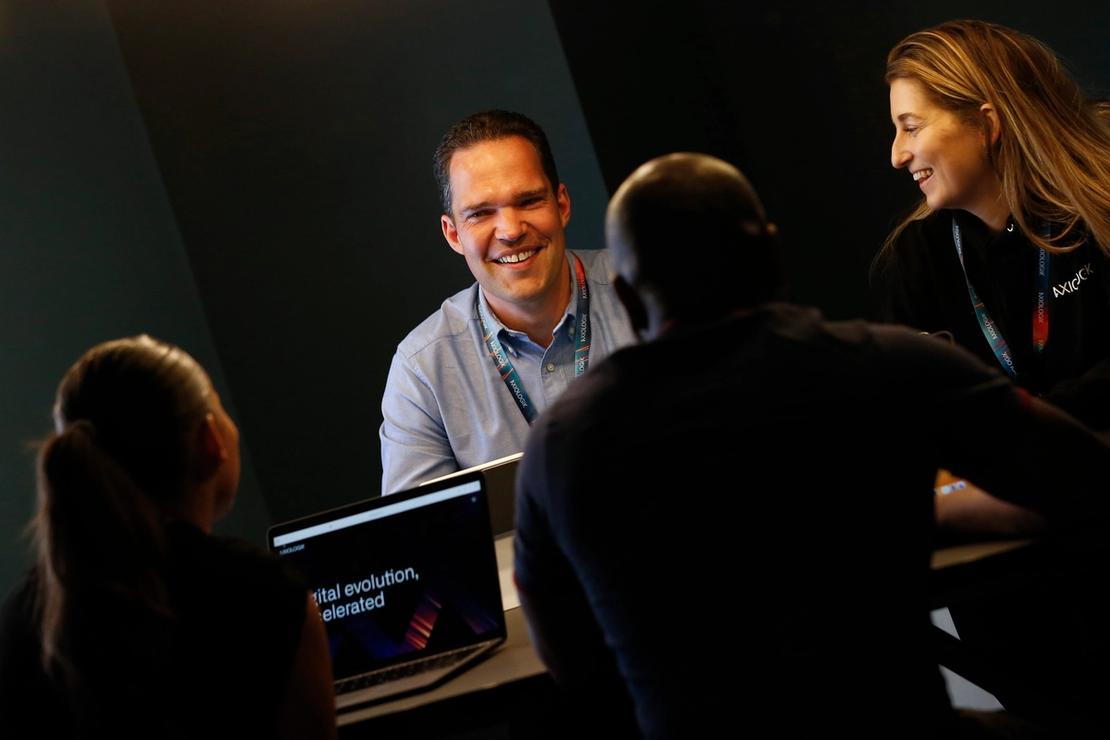
The first wave
In a competitive Finance market, we have already witnessed a significant wave of digitalisation, where traditional banks and neo-banks have raced to get their products and services accessible on digital channels.
Companies have successfully recognised the need to reach out to their customers through convenient and innovative new channels and provide the services that are required to meet the ever-changing needs of their customers.
We have witnessed an increase in customer choice. New entrants have entered the market with their digital only offerings, while incumbents have migrated their services to digital channels; each with the overall strategy to provide the right services to customers on mass and at scale.
Technology teams have been empowered to identify friction in Customer Journeys and identify novel ways of providing ‘straight-through’ seamless experiences, making it easier and quicker for customers to obtain financial products and services than ever before.
Calmer waters
Since the Covid pandemic, we have witnessed an acceleration of this first wave as customer expectations for digitally accessible services has increased.
Following this first wave, we are now witnessing a level playing field of simple generic straight-through digital services. Banks and neo-banks are now seeking market differentiation by competing heavily on price/rates and increasingly using rewards and ‘switch tactics’ to compete in a crowded market.
Having successfully ridden the first wave, it is now a great opportunity to reflect...
In a market where in a couple of clicks, customers can access products and services from almost any provider, have we lost the personal touch under a blanket of straight through simplicity?
The second wave: drivers for change
An increase in market competition leads to anincrease in customer scrutiny and comparison. Customers are spending more time reflecting on their financial choices and are seeking better ways to improve their finances than ever before. Recent annual figures show a 44% increase in personal customer account switches when compared to the previous year(Pay.UK),demonstrating that staunch loyalties are being eroded by customer choice.
We are also witnessing an increase in consumer empowerment and competition awareness, in part due to the increase in popularity of free to access financial education and comparison services such as ‘Money Saving Expert’. With 16million users to the service each month, it is evidence that customers are seeking advice and education, which in turn leads to consumer confidence to seek new products and services.
This increase in desire to be educated and reassured is fuelled by the continuing economic environment where customers have increased financial pressures, with 41% of adults struggling to pay energy bills(Finder.com)
The second wave: Hyper-personalisation
In exchange for a more personalised service, customers are now more willing to engage more deeply; a study by CapCo found that 72% of Customers rate personalisation as “Highly important”.
We are also observing an increase in consumer trust with banks where customers are willing to share personal details in exchange for a more relevant and personalised experience. A recent report byopenbanking.org.uk informs us that 1 in 9 consumers are active users of Open Banking, which continues to rise each year. However, the current benefit to the customer in engaging in these open banking practices is often limited to simple financial categorisation and spending trends.
A strategy of Hyper-personalisation is a market differentiator that builds a more trusting, deeper and connected relationship with customers by providing digital experiences that are tailored and insight driven to customers as individuals.
There are two significant areas of hyper-personalisation:
Relevance
Understanding a customer’s individual financial context and motivations. An awareness of customer short and long term circumstances and financial attitudes. Finding new ways of providing unexpected value (proactively and reactively) to delight customers that feels relevant and worthy in the short and long term.
Includes personalised rates and products, recommendations for product/rate adoption based on predicted financial events (e.g. end of consumer finance, predicted peaks in expenditure, noticeable influx of capital), personalised rewards based on known preferences
Reassurance
Customers are seeking financial education and advice, and reassurance that their financial choices are optimal for them. No longer should customers be left with sub-optimal products and rates due to a lack of proactive education and advice from finance providers.
Financial inclusion and wellbeing is critical as incomes are stretched; financial institutions have a role to ensure customer finances are proactively scrutinised against their financial activity and behaviour, and proactively improved through trusted education.
Riding the second wave
In an environment of high competition and customer desire for hyper-personalised services, the commodity or 'holy grail' that finance providers should seek is no longer an anchor product such as a Current account. Instead, the commodity of value is the customer relationship itself, and critically the data that comes with it.
Finance providers wishing to embrace hyper-personalisation, and regain customer loyalty, need to build a strategy that takes full advantage of their customer data. Unlocking valuable and relevant customer insights - that can be connected to CRM systems, to engage customers with valuable personal education, recommendations and tailored product solutions - requires a solution architecture that is market leading, cost effective and integrates with existing technology solutions.
This requires continued investment and adoption of cloud-hosted big data environments and critically an adoption of Personalisation platforms that integrate big data solutions, advanced data analytics, CRM, artificial intelligence, and machine learning.
Pivoting architectures to put the customer at the centre of their entire portfolio, away from product specific siloes is also a specific challenge for technology teams. Coupling that with the critical need for a trusted Information Security solution, Financial providers are experiencing new challenges and should seek proven experience to unlock the opportunity to provide a holistic, joined up, personalised and secure solution to the market.
At Axiologik, we are experienced in working with large national clients to provide trusted Identity platform and Personalisation platform solutions.
Want to know how we can help? Send me a message
We’d love to collaborate with you. Whether that be as a client, colleague, associate or partner we are sure we can do great things together.
- 4 St David’s Court
- David Street, Leeds
- LS11 5QA
 Leadership of Critical Change
Leadership of Critical Change Designing Exceptional Services
Designing Exceptional Services Digital Organisation Optimisation
Digital Organisation Optimisation Driving Engineering Excellence
Driving Engineering Excellence Service Ops Modernisation
Service Ops Modernisation Unlocking the Cloud
Unlocking the Cloud

